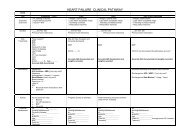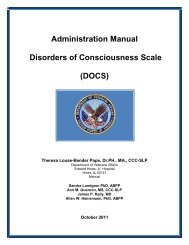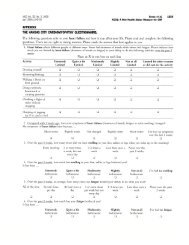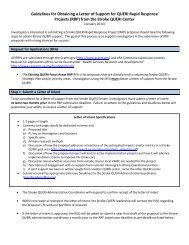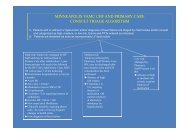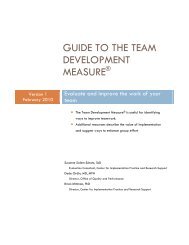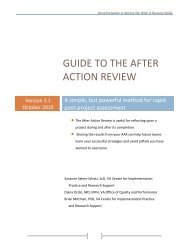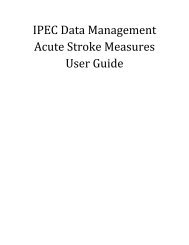The Veteran Supported Education Service Treatment Manual: VetSEd
The Veteran Supported Education Service Treatment Manual: VetSEd
The Veteran Supported Education Service Treatment Manual: VetSEd
Create successful ePaper yourself
Turn your PDF publications into a flip-book with our unique Google optimized e-Paper software.
Stage of Supervisory Relationship. <strong>The</strong> supervisory relationship can be divided into three<br />
segments: beginning, middle and end. <strong>The</strong> end segment relates to supervisees who leave<br />
supervised experiences and transition to independent practice. Given the nature of peer<br />
<strong>VetSEd</strong> services and the recommendation for ongoing supervision, we focus here on just<br />
the beginning and middle supervisory segments.<br />
During the beginning segment the primary aims are to develop the supervisory<br />
relationship, assess the peer <strong>VetSEd</strong> provider‘s knowledge skills and abilities in the area<br />
of supported education, and to monitor initial experiences. <strong>The</strong> supervisor‘s role in the<br />
beginning segment can include providing direct feedback, educating the peer <strong>VetSEd</strong><br />
provider about policies, practices and procedures, and reviewing and signing the<br />
supervisory contract, among others.<br />
A primary aim during the middle segment is to foster movement of the peer <strong>VetSEd</strong><br />
provider from relying heavily on supervisory guidance to moving toward semiautonomous<br />
<strong>VetSEd</strong> practice. Haynes, Corey and Moulton (2010) identify the primary<br />
struggle of the middle phase as the supervisee wanting to move forward while the<br />
supervisor is wanting to ―tread carefully.‖ Supervisory roles and related tasks during the<br />
middle segment include using role-plays, discussing and reviewing potential ethical<br />
dilemmas and creating learning opportunities for the peer <strong>VetSEd</strong> provider to critically<br />
think and struggle with next steps in their work with <strong>Veteran</strong>s. <strong>The</strong> reader is encouraged<br />
to consult with Hayes, Corey and Moulton (2010), Ch. 5 for a thorough review of roles<br />
and tasks associated with the phases of supervision.<br />
Supervisory Contract<br />
<strong>The</strong> supervision alliance and related process are facilitated by early and clear<br />
conversations about the nature and tasks of supervision. Having a mutual understanding<br />
about the roles, responsibilities and expectations of the <strong>VetSEd</strong> supervisor and peer<br />
provider establishes focus, purpose and clarity in the supervision process. At the<br />
beginning of the supervisory relationship, the <strong>VetSEd</strong> supervisor should go over the<br />
following topics with the peer <strong>VetSEd</strong> provider:<br />
Background and expertise of <strong>VetSEd</strong> supervisor<br />
Nature and expectations of supervisory relationship<br />
Importance of diversity issues and their relevance to the supervisory context and<br />
<strong>VetSEd</strong> services more generally<br />
162 | P a g e



